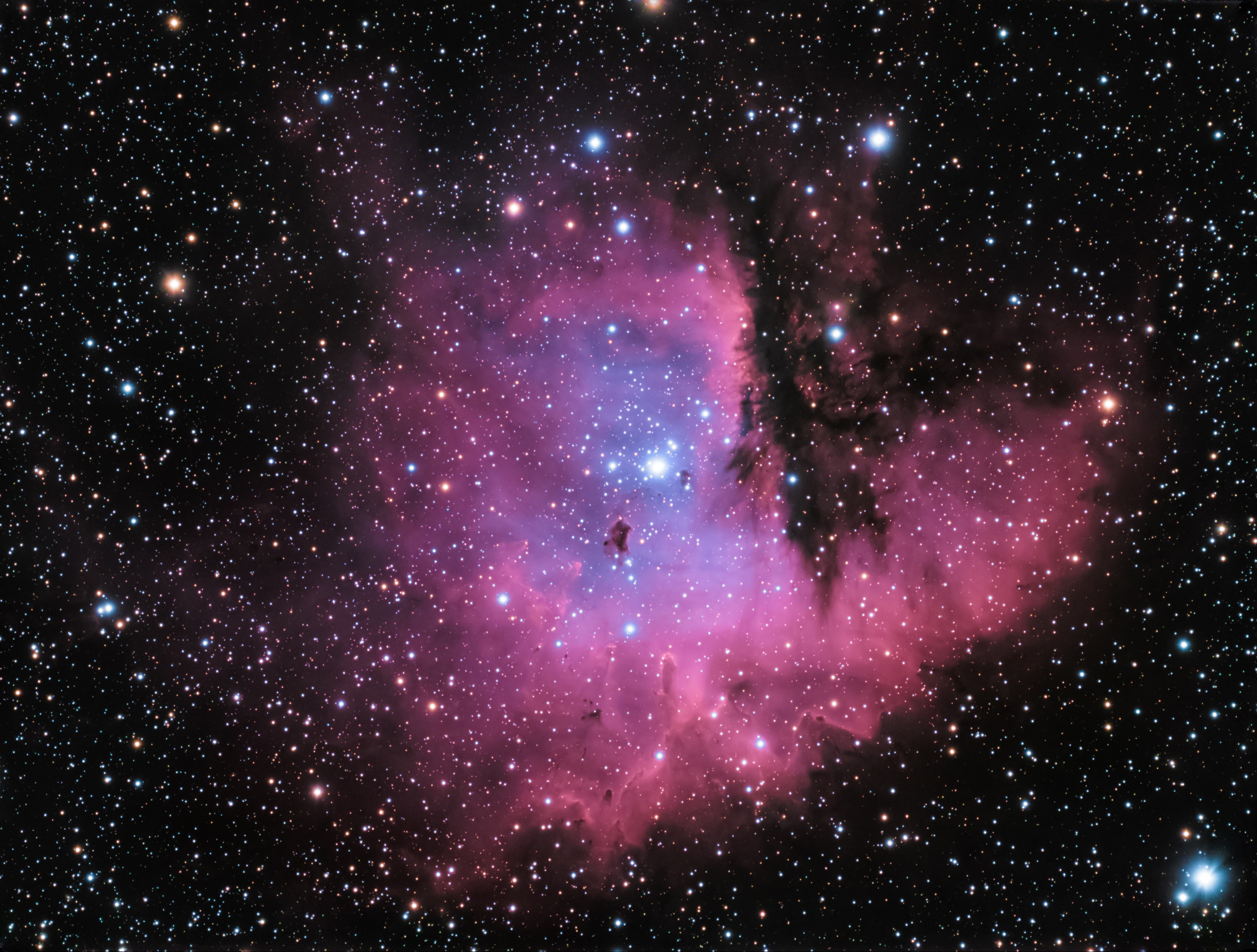Pacman Nebula (NGC 281)
The Pacman Nebula in the constellation of Cassiopeia is an emission nebula which glows due to the absorption of ultraviolet light from the bright central stars, the largest of which is a powerful massive young star of spectral class O6. The reemission of this absorbed energy is mainly in a few very narrow spectral lines, of which Hydrogen-alpha (red) and Oxygen III (blue-green) are the most prominent. The ultraviolet light has sculpted away the interior of the nebula leaving behind a few stubborn dark clouds which have resisted erosion thus far. These dark clouds are known as Bok Globules and are very prominent in this nebula. The Pacman nebula is best visible on mid-summer nights, although it is very faint for the human eye, even with the aid of a large telescope. However, modern CCD and CMOS detectors on even a small telescope can easily resolve this nebula.
This photograph was taken by Prof. Dr. Joachim Stadel in Bergün during five nights in August 2025 using a Celestron C9.25” Schmidt-Cassegrain Telescope. As part of our Bachelor study program, our students will be able to take images of such Nebulae and many other exciting objects and learn about the physical processes that create them.
